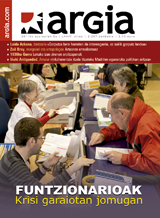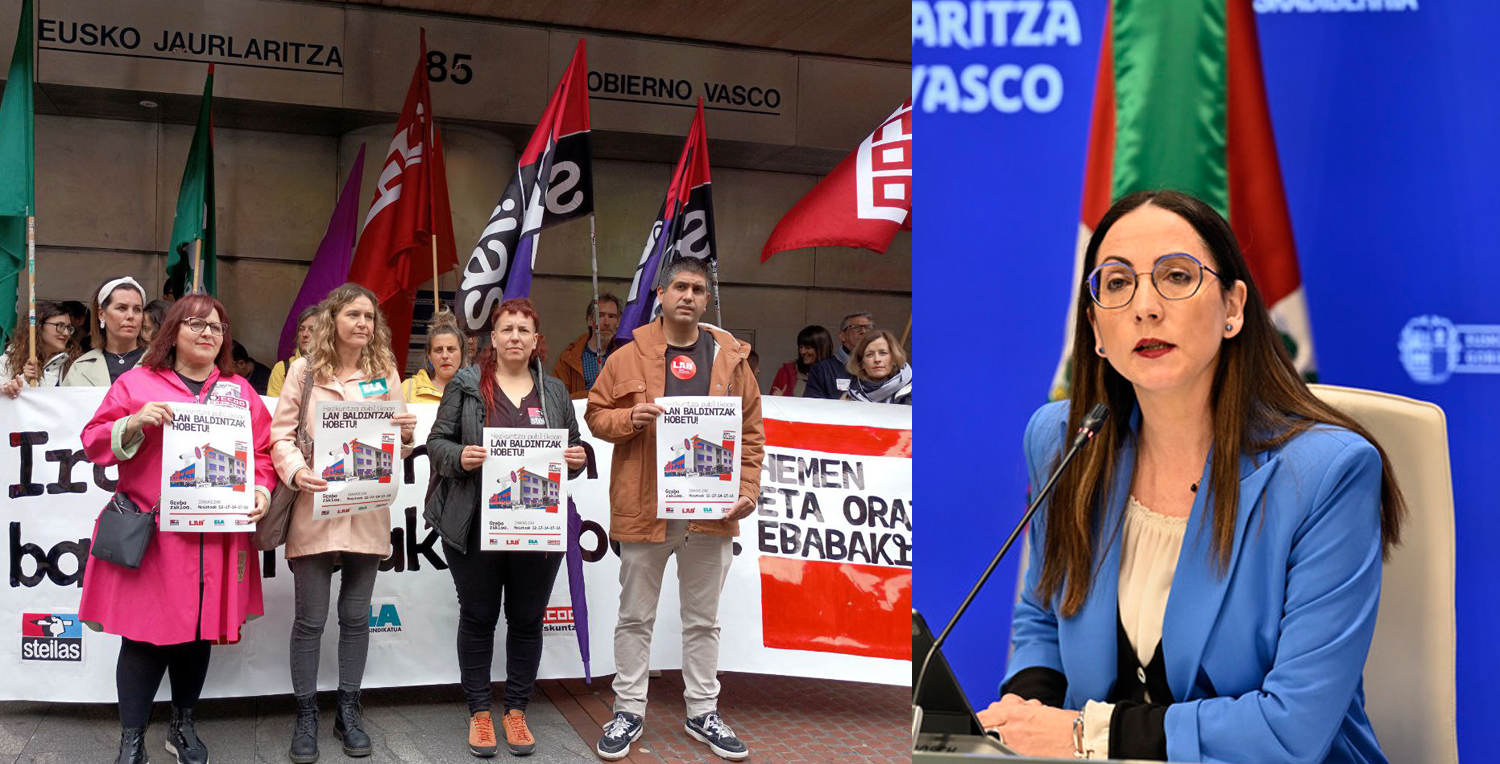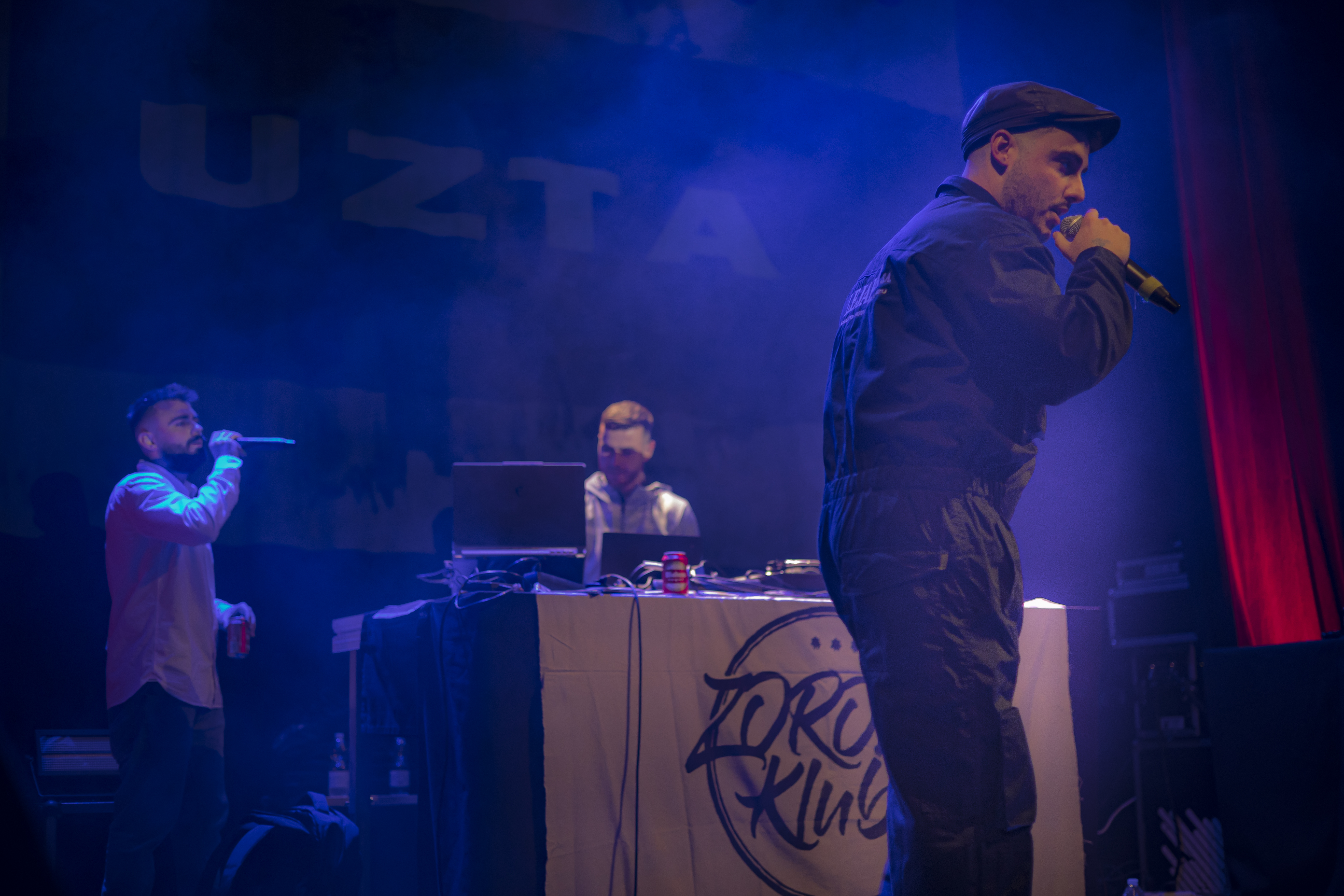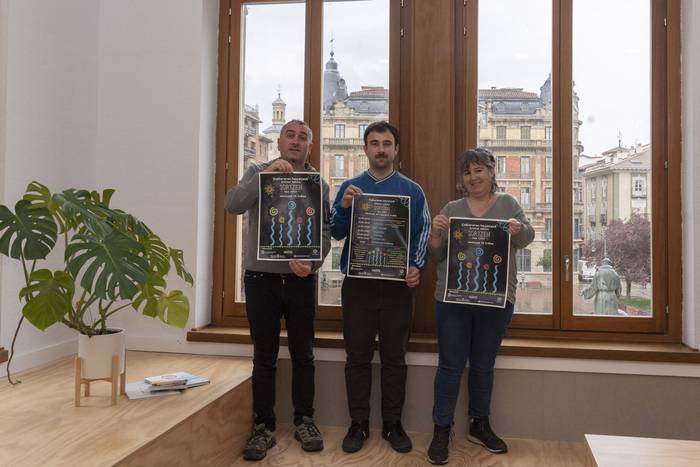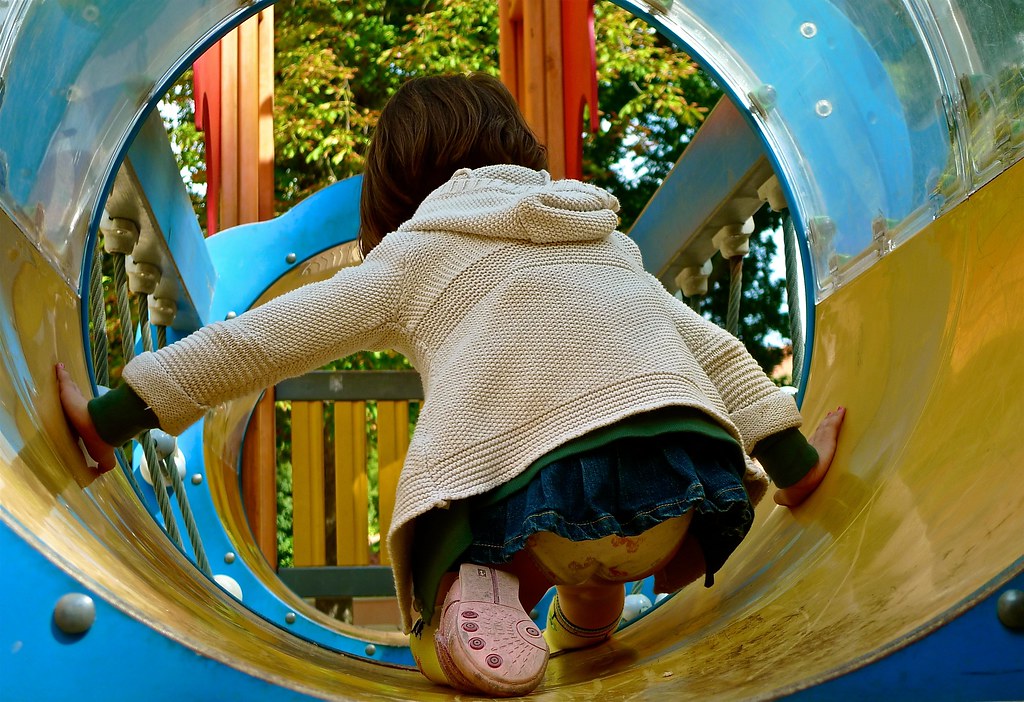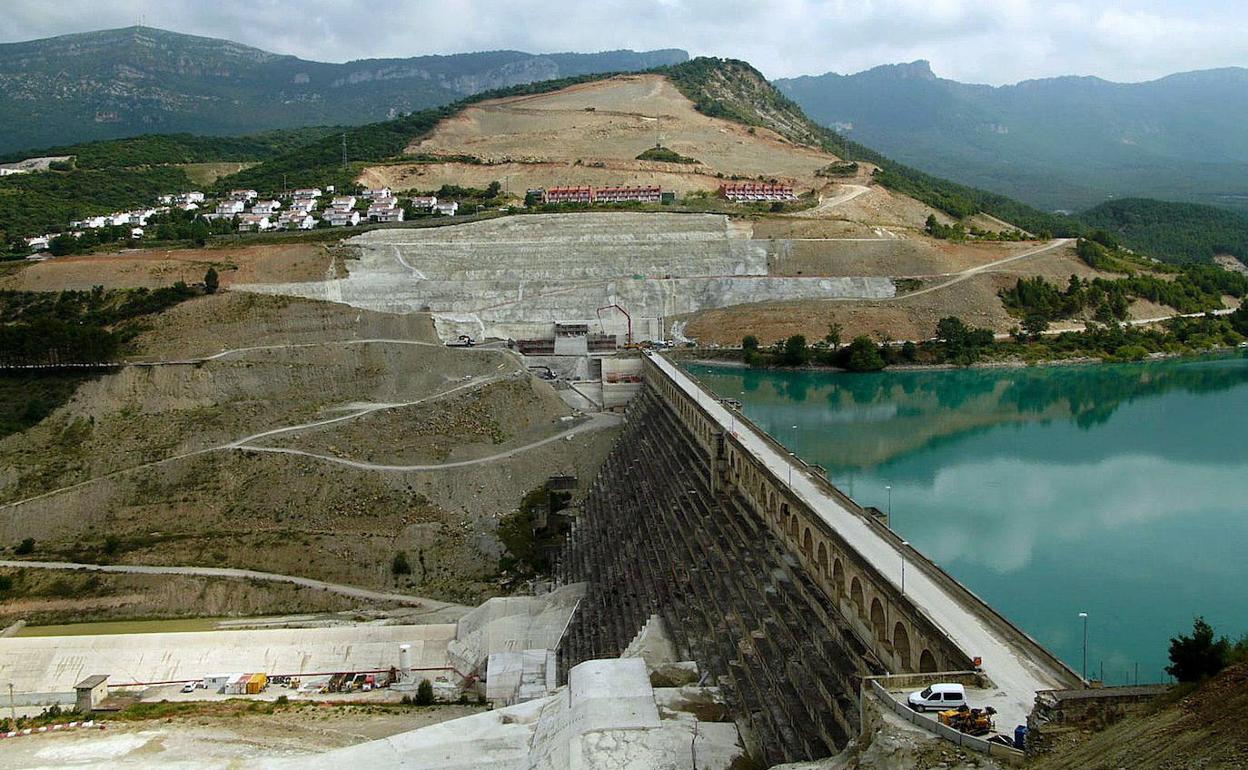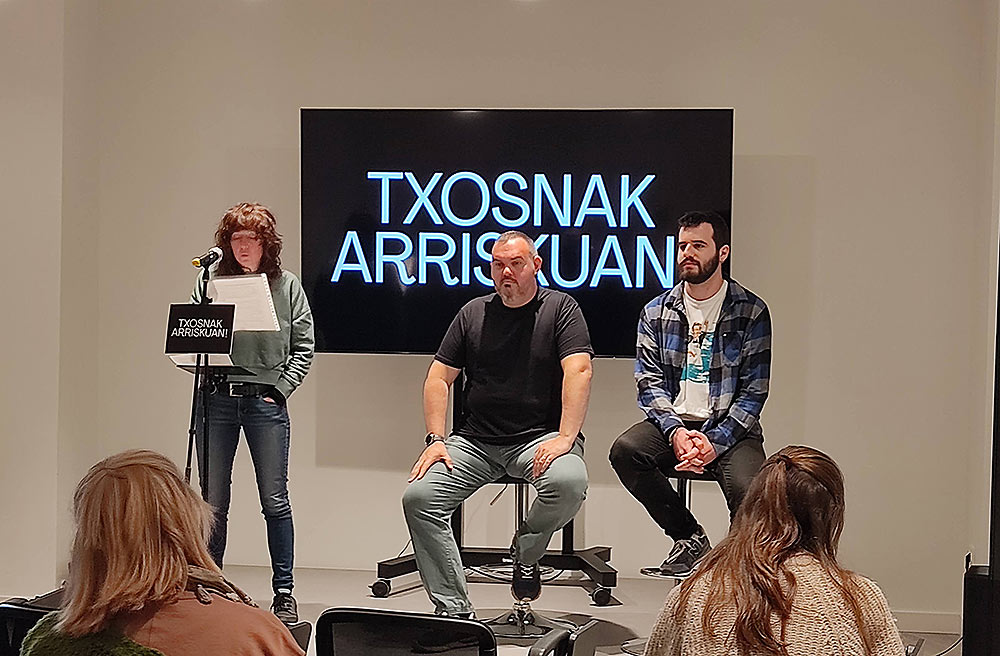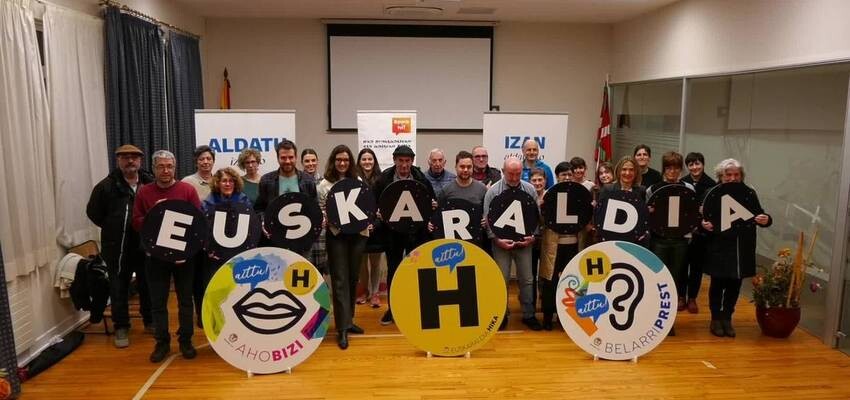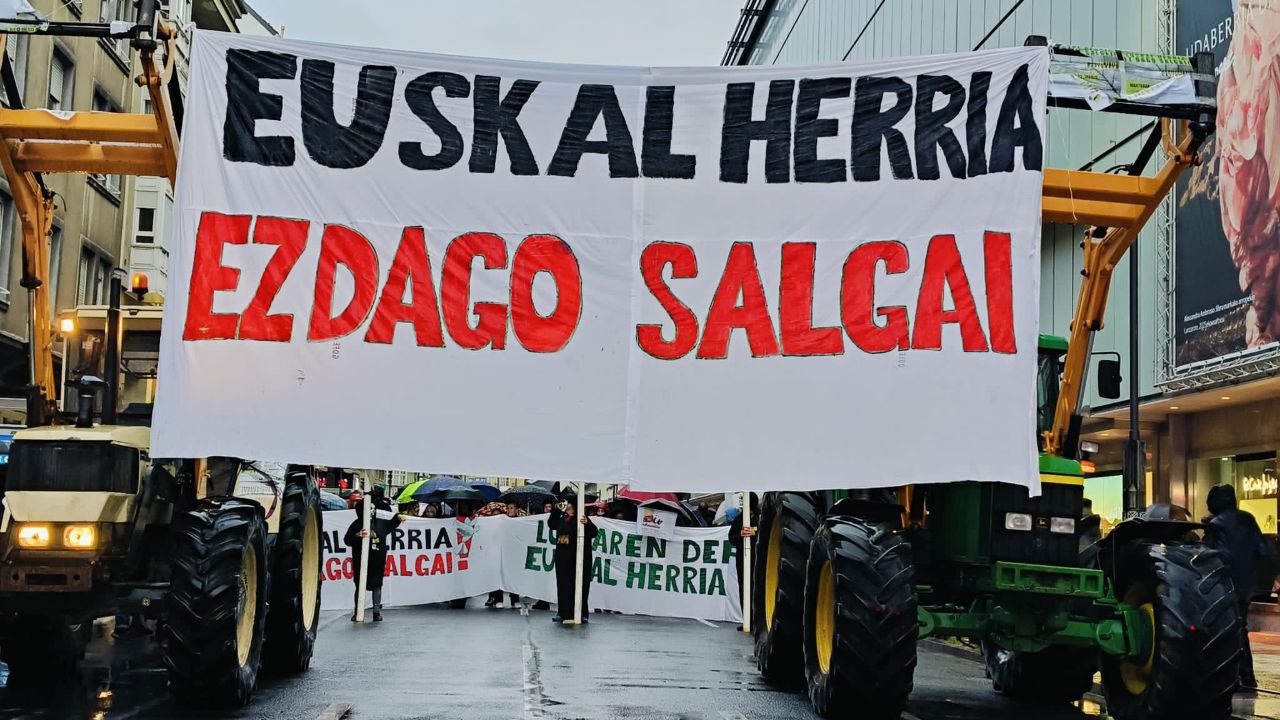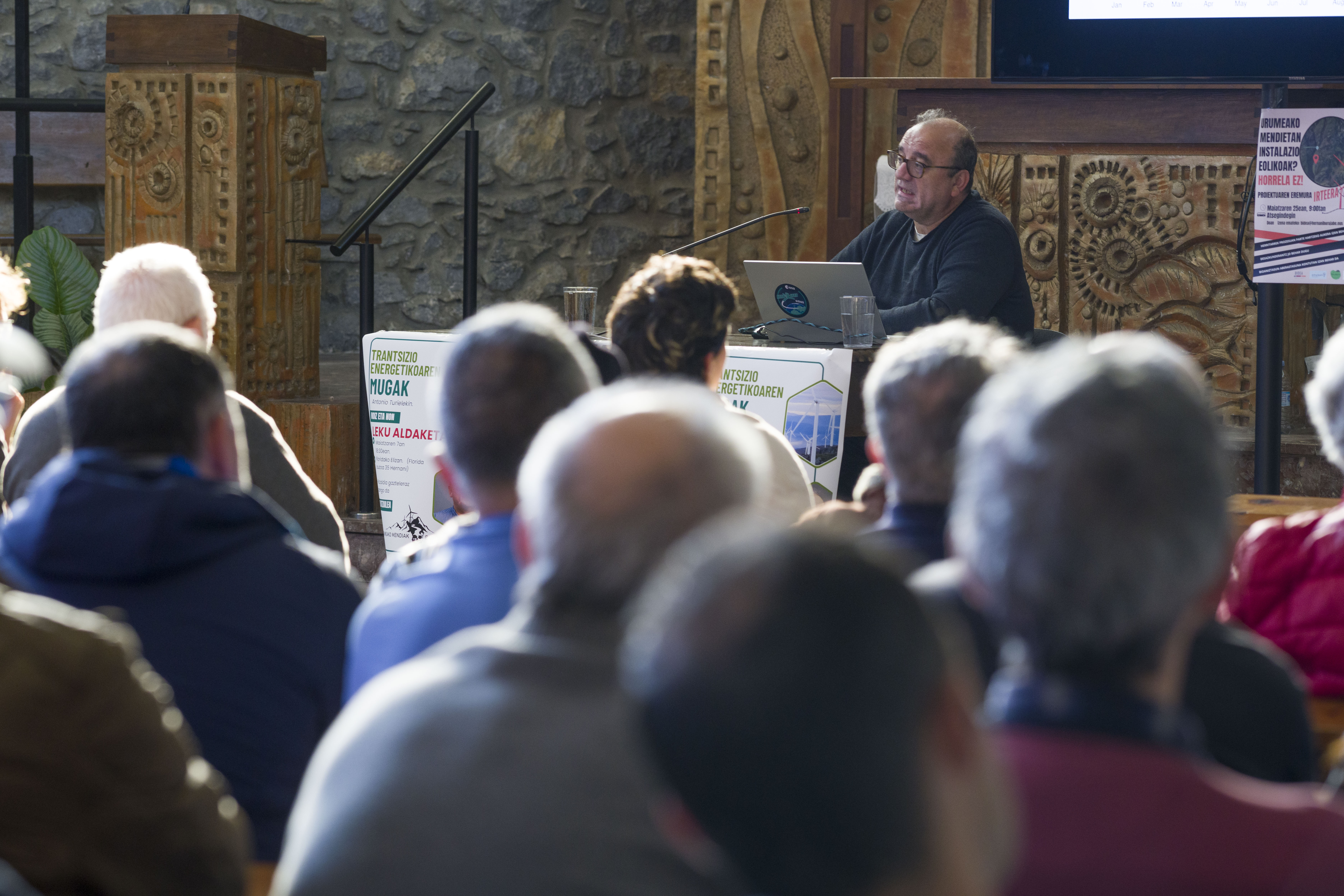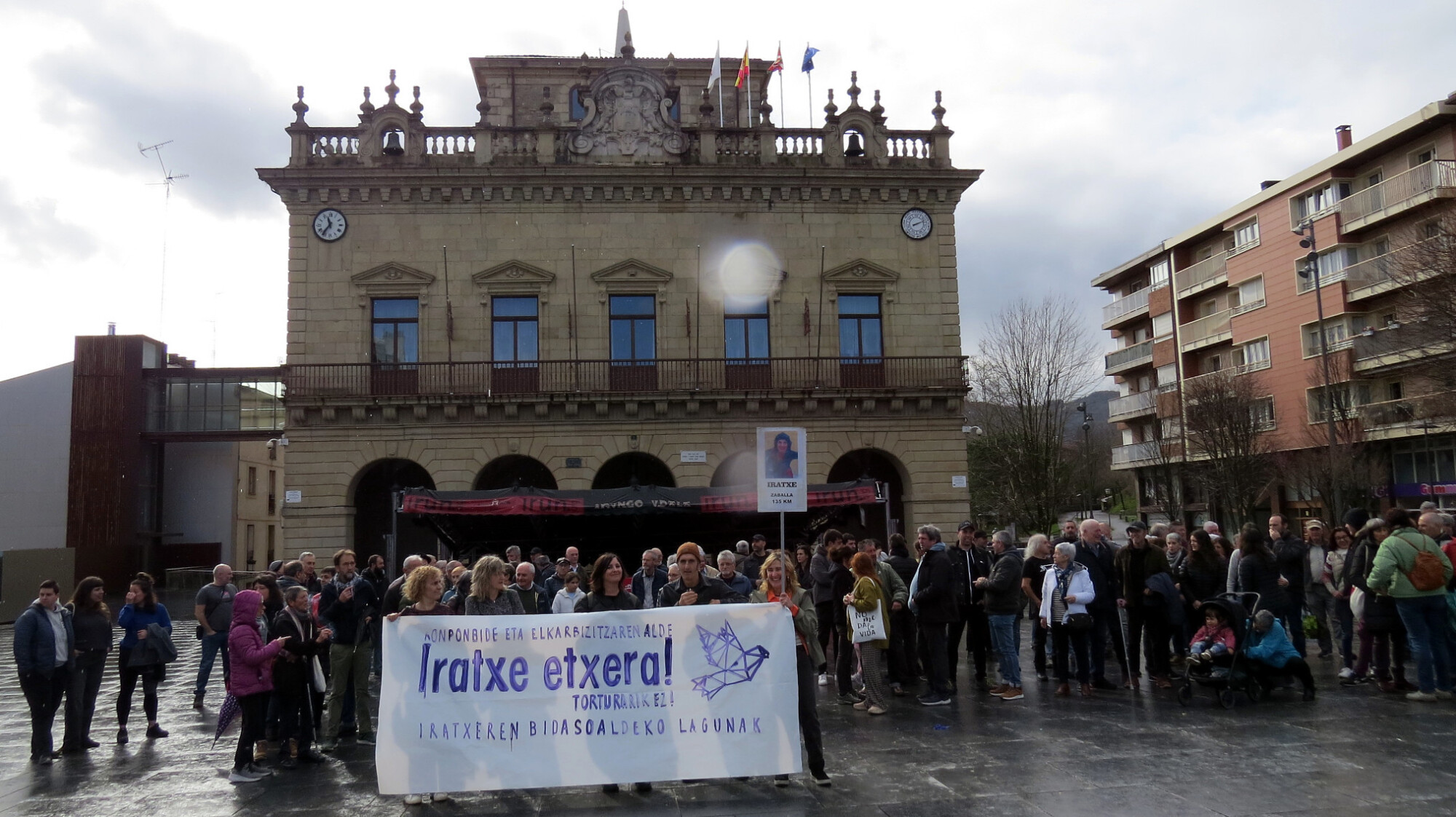"The dancer is also often creative, not just a machine."
- On the way from Álava to Barcelona, Laida has made a stop at the Centro de Arte Contemporáneo de la Comarca de Pamplona to perform this interview. The backpack carries a weight on the back, like a snail. Computer inside. From a very young age, the nomad is walking around the world, happy, creating the choreography of his life.
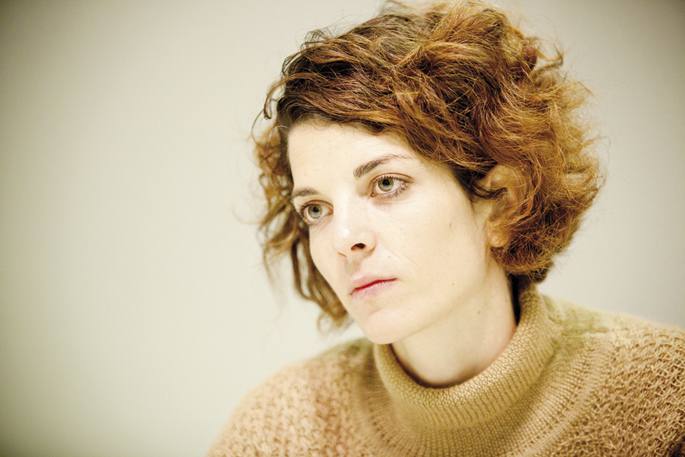
Since she started dancing at 8 years old, you haven't stopped. Hard?
On the one hand, it was tough, but having the opportunity to repeat it, I would have done the same. While studying at high school, he danced four hours every day and also on Saturdays. When I finished COU, I went to London because I loved dancing. I didn't know if this was going to be my profession or if I was going to learn something else. At first people and parents thought it was much better to choose a normal career, but the teachers gave me a lot of confidence to stay there. Then life has also led me down that road: I have had grants and scholarships to continue learning, to start working and to develop my projects.
You spent three years in London and from there to Austria. Why?
I continued the line I took from here in London: a very classical way, lots of ballets and also contemporary dance, but not very experimental from the creative point of view. We were doing some exercises of our own but without guidance. So I started making my first creations, very different from what I do today. I was clear that I didn't want to be a classical dancer, but to play in the realm of contemporary art and creation, and that's why I went to Salzsburg. The one there is a good school to work with different people. There are many teachers going by and among the students there was also everything when I was: like me, the ones who had a very technical training, the actors, the plastic artists who were involved in the world of dance... I learned a lot from them. Two years later, I got the Fullbright scholarship to go to New York to study at The Trisha Brown Company Studio and Movement Research schools. There, all year round, I had enough money to do what I wanted. Since he was organized in the city, he could do any course. There I also had my first professional job with the company Sens Production: a performance every night throughout the summer. I have not had the opportunity to repeat the same function again. Then I went back to Salzburg to get the title and create the work of Lego. There I started working with several companies. A few years later I went to live in Brussels. My background has been quite hybrid, from now on.
Does the training ever end?
The learning process never ends. That is why I live in Barcelona, in order to be able to continue studying. You can get to know many courses and the work of many choreographers. On the one hand, it is important to take care of the body and on the other hand to feed creativity. In Euskal Herria there are several options, but not so much. In Álava, for example, in the village of Lasierra is the Azala space. It is a center for research, promotion and dissemination of the stage creation created by Idoia Zabaleta. I was there in early October and I thought it was a very well thought out place. It is a beautiful and quiet place, very well organized to carry out the projects. Idoia Zabaleta is an important figure in the dance world today, here in Euskal Herria and at the state level. I wanted to meet Azala, I sent him the project and he opened the doors of his house to us. Idoia has been working in the company Malpelo for many years. They have another center in Girona. With them they have created a network to give artists an unbeatable opportunity to create.
Here we always think we're worse than anywhere else. Is that true?
The situation in the Basque Country generally seems to be improving. The one from Navarre is not so much. However, I have been doing well so far and they have always helped me. What happens is that it's not fully planned. From a legal point of view, conditions are not designed to facilitate the way for the creator. The BAD festival in Bilbao, for example, is a kind of exception. Your question is: What can you do to carry out your project? So, for example, they give you all the facilities when it comes to making all the certificates and papers. Here in Navarre, on the other hand, it is very difficult. The world of dance is rather precarious and, as they put it as a company, it makes the work more difficult. It has sometimes happened to me that two days before the premiere I had to be justifying the subsidies. Madness. The truth is that in recent years the Basque Government has done a great deal to help the dance sector. There is an association of professionals and the administration takes into account their opinion. There is no dialogue in Navarre. Attempts have been made to encourage participation and dialogue with Plataforma Arte Contemporáneo, but no real dialogue has been created. The lucky ones get some help, however: The City of Pamplona offers the Civivox rooms. In the case of Iturrama, specifically, I will present MU-TO on 26 November.
In Europe artists have a salary, do they not?
It depends and where. Brussels is the last place I have lived before I went to Barcelona, and there they do have an artist’s statute. If, as an artist, he is quoting about EUR 12,000 in a year and a half, he gets a lifetime unemployment allowance. It gives you enough money to keep you in the months when there's no work. If you say this here, people immediately think: What a wide front! To live with milk in live meat without a blow! Maybe that's what people would do here. They would look for a way to live this status. But the creator really needs this. I've been pluralist in a thousand things: teaching at the Mercat de las Flors theater as a dresser… and at the same time creating my own project and doing performances with another company. Our calendar is like a puzzle. In addition, in a few months we are full of work and in others we have nothing. I've been lucky. In my studies I have been obtaining academic degrees, which initially served me to obtain grants and scholarships to be able to continue studying. So I'm here. Fortunately, I have never had to work in a bar. We don't have stability, and that makes you more nervous. In that I have also been learning with people like Idoia Zabaleta: with desire and thinking positive, working from the heart, paths open.
It is said that contemporary art is not understood.
If people don't like it, nothing happens. Anyway, no one likes contemporary art. There are very open people, and here, for example, the halls are often full. What happens is that young people don't move too much. They don't have EUR 10 to pay the ticket, but EUR 50 to leave on Friday, in general. There is also a lot of lack of training. In Belgium, for example, dance workshops and other artistic disciplines with children are organised in public schools. Another problem is that in our environment theatres don't have their own brands. In Barcelona, each place has its own programming line and you already know what you can find in it. Here people have nowhere to go to find whoever they want. Another example: In many parts of Europe there are many rooms of about 30 seats. The fact that only 30 people here attended a show would have been an economic disaster. The Bilbao Foundry is of that kind, very interesting. If you want to drive creation, these small spaces are needed.
What are the most recent trends in Europe?
There are different schools. As most dancers walk around here, fortunately we can find the trends of Europe right here. There are very conceptual people, who work in the demonstration of a creative thesis, very aesthetic, other more emotional… And there are also people who have been touring three years ago around the world with large-format shows – dance, theater and music. It's very broad. Now some work on a very solid conceptual line: the naturalness of the body and the lack of formal movement. Dance without dancing.
Do you work the body as high-level athletes?
I think this is a myth, a very traditional idea of dance. It's true that you have to be fit and if you don't, you don't feel well. But we don't just want to give bigger jumps or dance faster. That would be the behavior of the traditional dancer. When a choreographer uses your body, you're a machine to formulate your idea. About 30 years ago, however, contemporary dance began to look at the body in a different way. The dancer, above all, is a person. It has technical knowledge and skills, but at the same time its individuality is very important. And beyond that, the dancer is often creative, not just a machine. We put our bodies in much more natural places. The dance machine myth remains true, for example, in the National Dance Company. But in many groups, they'll always give you a test of creativity. Give us an idea and ask: What would you do with this? Today, the choreographer doesn't tell him a step left, forward or backwards and something like that. Now they give you an idea and you try to incarnate yourself.
Does age matter?
To have a machine, yes. And in addition, after being in very good shape, at the age of 40, they've often crumbled. Softer techniques are used in this type of dances. We spend many hours caring for our body. We investigate how to move efficiently but healthily. However, lesions may occur. Our format includes dance, theater, performance, plastic arts… We are talking about very hybrid dance formats and here the body is interesting by itself, not just the body worked. We'll see it with age. It is more worrying to live in precariousness: now I have money, then not. You're not sure.
You've lived in many places. What's your home?
Now I have taken one in Barcelona and for the moment that will be my home. Pamplona is my hometown. I come from here and my roots and my family are here, but at the moment I don't think to stay here. Being in a culturally alive place is very important for nurturing creativity.
What’s never missing in your suitcase?
Computer and hard drive. There you have everything from the point of view of production and creation. Here I use webcam to document information, cameras, videos… For essays, to record improvisations, for example.
Ekainaren 30ean, 1981ean, Betelun sortua, “zertarako ez dakit. Urte batzuk beharko ditut hori jakiteko!”. Txikitatik eta 18 urte bete arte Iruñean bizi izan da. 8 urterekin hasi zen Nafarroako Dantza Eskola Ofizialean. UBI bukatu ondoren Londreseko Rambert School of Ballet and Contemporary Dance izeneko eskolara joan zen. Han hiru urte igarota Salzburgora, SEADera (Salzburg Experimental Academy of Dance), bi urte geroago New Yorkera, eta gero Bruselara. Egun Bartzelonan bizi da gehien gustatzen zaiona eginez: dantza garaikidea. Jean-Marc Serrano dantzariarekin batera, Coches Rojos, Miedo y Cafeteras lanarekin Arte Eszenikoen lehen saria eskuratu zuen Nafarroako Artista Gazteen topaketetan, 2008an. 2009an HASIERA (el principio de la incertidumbre) taularatu zuten Bernardo Atxagaren testuetan oinarrituta. Orain, MU-TO izeneko proiektuan dabil buru-belarri.
MU-TO da Laida Azkonak Bilbon aurkeztuko duen dantza eta bideo muntaiaren izena. Azaroaren 5ean, BAD, Bilboko Antzerki eta Dantza Garaikidearen jaialdiaren XIII. edizioan izanen da. “Jaialdi honetarako aukeratzen dituzten proiektuen egileei, diru-laguntza emateaz gain, espazio bat eta laguntza teknikoa ere eskaintzen dizkiete. Horiek sormen lan bat egiteko baldintza onenak dira. Abuztu osoan Bilbon egon nintzen lanean eta orain azaroaren hasieran itzuli naiz erresidentzia teknikoa egitera, hau da, 5eko aurkezpenerako detaile guztiak prestatzera”.
“MU-TO proiektua oso interesgarria da. Nire sorkuntzan norabide aldaketa bat egin nahi nuen. Azken urte hauetan nahiko produkzio handiak egin ditut Hierbaroja kolektiboarekin eta orain gehiago sorkuntzari begira jarri nahi dut. Duela bi urte hasi zen eta prozesu honetan, orain dela urtebete, Verónica Eguaras sartu zen, bideo muntaian aritzen den artista”.
“Nik beti ikus-entzunezkoekin lan egin izan dut. Inspiratzen nauen zerbaitetik abiatzen naiz eta dauzkan posibilitate guztien bila aritzen naiz. Orain egiten ari naizen pieza honek badakar mahaiko lan asko. Nik uste dut hau dela nire pieza teorikoena. Memoriari buruzko gogoeta bat. Teorikoa da, baina ikusi dutenek ni naizena argi erakusten dudala esaten didate”.
“MU-TO, Mutar ideiatik dator. Oroitzapena, inpresioa eta ahanztura. Iragana orainalditik berregiten dugu, hor gelditu zaizkigun inpresioen bidez. Nik eszenatokian nire memoria fikzionatzen dut. Iragana bere osotasunean ezin denez gogoratu, historiaren zati batzuk nire nahiari fikzionatzen uzten diot. Memoria kolektibotik egiten dugu beti gure berreraikuntza. Horiek dira gure kanonak. Kontatuko ditut nire gauzak, baina baita historiako pertsonaia batzuenak ere nireak balira bezala”.
“Zenbait tokitan erakutsi izan da: Iruñean, Gasteizen, Bartzelonan, Madrilen, Brasilen… Orain estreinatu behar dudana, hala ere, guztiz berria da, gogoeta teoriko horretatik sortutako lan berria. Arraro egiten da hainbeste tokitan erakutsi ondoren estreinalditik hain hurbil egotea, baina hori da ideia: beti eraikitzen ari den zerbait izatea. Nire lanak ez ditut normalean ixten, baina orain azken fasean sartzen ari gara”.
BRN + Neighborhood and Sain Mountain + Odei + Monsieur le crepe and Muxker
What: The harvest party.
When: May 2nd.
In which: In the Bilborock Room.
---------------------------------------------------------
The seeds sown need water, light and time to germinate. Nature has... [+]









